
- Home
- Age
- Brand
- American Art Decor (14)
- Antique (12)
- Coca Cola (11)
- Coca-cola (11)
- Dechane's (9)
- Esso (17)
- Firestone (15)
- Goodyear (13)
- Handmade (21)
- Madura Coats Treads (11)
- Michelin (8)
- Mobil (13)
- Mobil Oil (11)
- Ovaltine (7)
- Samurai (44)
- Shell (10)
- Signs By Jake (11)
- Texaco (17)
- Unknown (19)
- Winchester (27)
- ... (4562)
- Material
- Theme
- Type
- Acoustic (9)
- Baskets (9)
- Bowls (11)
- Boxes (46)
- Furniture (14)
- Kitchen Equipment (25)
- Marquee Sign (13)
- Metal & Ironwork (31)
- Painting (191)
- Paintings (14)
- Plaque (20)
- Plaques / Signs (18)
- Pottery (13)
- Print (22)
- Sculpture (13)
- Sign (52)
- Signs (76)
- Street Sign (19)
- Tools (11)
- Wooden Sign (9)
- ... (4247)
- Year
Antique Old Primitive Texas Southern Folk Art Horse Coach Harness Trade Sign
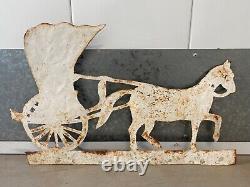

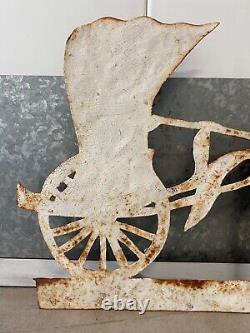

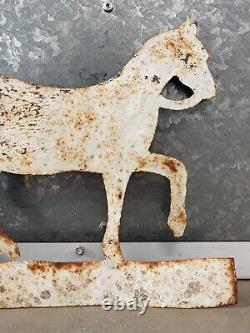
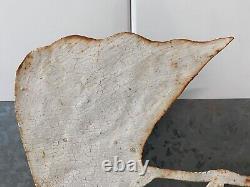
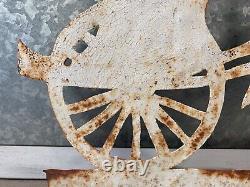
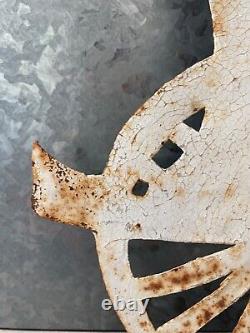
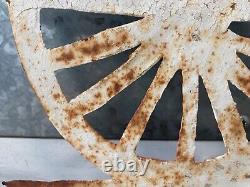
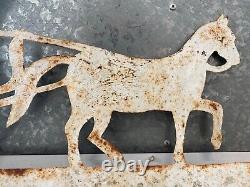
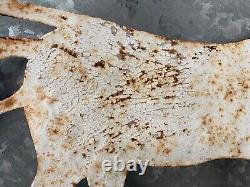
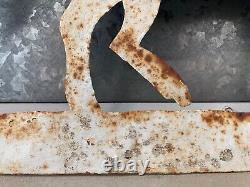
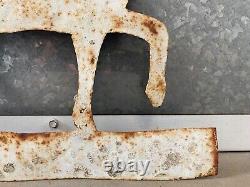
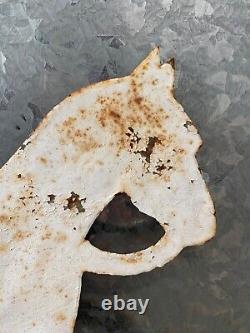
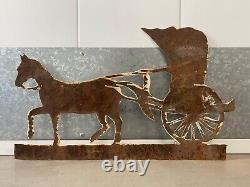
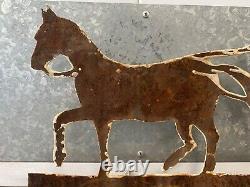
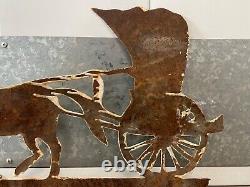
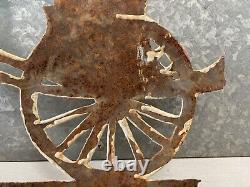
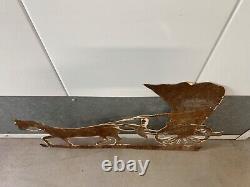



This is a seldomly seen and early Antique Old Primitive Texas Southern Folk Art Horse Coach Harness Trade Sign, comprised of painted sheet metal and hand cut, displaying the image of a coach and horse. This symbol was predominantly used by coach and harness makers and would have been an easily recognizable symbol in 19th century America, when many people could not read or write. This sign likely dates to the 1880's - 1890's and would have hung outside of a business.
It was acquired from the rafters of an old barn in West Texas, United States. Approximately 24 1/2 inches wide x 15 1/4 inches tall. Very good condition for a century of age and outdoor use, with an honest patina of expected paint loss, craquelure, bent edges and oxidation please see photos. This rare and early American folk art trade sign is priced to sell.If you like what you see, I encourage you to make an Offer. Please check out my other listings for more wonderful and unique artworks! America's figural trade signs descended from the tradition of English inn signs. Throughout Britain, colorfully painted figures and symbols, helped the mostly illiterate customers connect a particular inn with a name like Red Lion, Blue Boar or King's Crown.
This custom was carried to the American colonies where it was continued and expanded to many other business activities by necessity. Colonial merchants, for example, could not afford the large sheets of glass for large store windows to display their merchandise.Customers could not see much through the many small panes of glass in most store fronts. Lettered signs were of little value due to the low literacy rate and the constant flood of immigrants who spoke many different languages. Early streets had names but not necessarily street numbers making a business hard to find by address alone. That's why American merchants--like British inn owners-- turned to symbols to tell shoppers what goods or service they offered for sale. Figural trade signs were common sights in large cities from late 18th century through the first quarter of the 20th century.
As literacy improved and immigration slowed, lettered signs became more practical. Electricity allowed shopping after dark and figural trade signs, no matter how brightly painted or detailed, were invisible at night. Incandescent lights and then fancifully shaped neon made brilliant displays 24 hours a day and quickened the end of the simpler signs. Figural trade signs in use today are generally more noticeable as a curiosity than as a practical way to promote business.There were two basic types of trade signs: those made at home and those made by a sign company. Home made signs were generally found in small towns where the owner or local "artist" made a one-of-kind piece. Home made signs were usually made of wood which could be worked with everyday household tools such as saw, hammer and chisel.
These signs are more in the category of folk art and will not be covered in this article. Factory made trade signs tended to be in larger cities where local ordinances, as a matter of public safety, governed the types of signs allowed and their installation. Factory made figural signs were usually some type of metal such as tin, sheet steel, zinc and copper. These commercially made signs were fairly complicated involving dies, molds, castings etc. Many commercially made figures were also offered as trade sign weathervanes as well as hanging signs. Some signs, like those of copper, were either gilded or finished in a natural patina, but most were either painted originally or painted at some time over the years.
